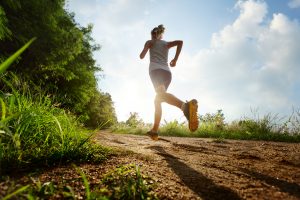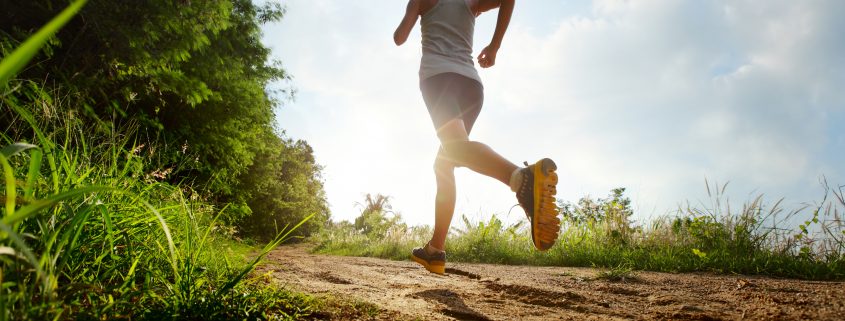Bored of RUNNING SLOW…?
Don’t get stuck with just one pace!
There’s a funny phenomenon in endurance sports that I like to call “becoming a one-speed athlete.” It happens to runners, cyclists and triathletes whose training becomes so focused on sustained efforts at race intensity that their ability to work at higher intensity levels disappears!

Summer Running
Their low end capabilities also become nullified because of the idea that the athlete needs to perform at “race” speed, or work hard. The one-speed athlete phenomenon presents itself most notably when endurance athletes do shorter races and feel annoyed by proving unable to go any faster over the shorter distance than they intend to go over the longer. A great, gaping hole in their fitness is revealed for all to see.
A recent example involves Ryan Hall, the brilliant young American distance runner who set a new American debut marathon record of 2:08:24 in London. That’s 4:53 per mile. A few months later, while in the thick of training for the U.S. Olympic team trials marathon, Hall ran the U.S. Outdoor Track and Field Championships 10,000 meters, finishing seventh with a time of 28:51. That’s 4:38 per mile, or just marginally faster than the pace he was capable of sustaining for another 20 miles. That’s the one-speed athlete phenomenon for you.
The problem with becoming a one-speed athlete is that it hinders performance in long-distance races as well as in shorter ones. Here’s how: Recent research has shown that rating of perceived exertion (RPE)—not heart rate or blood-lactate level or any other physiological factor—is the best predictor of fatigue during exercise. In maximal efforts over any distance, the athlete’s RPE increases linearly throughout the event, consistently reaching a level 6/7, or “hard”, rating after 20 percent of the distance has been covered and peaking at a level 10, or “maximal”, rating when the finish line is within sight. (The only exceptions to this pattern are beginners who are inexperienced in how the body feels and as a result lose the effect that makes RPE such a reliable fatigue predictor in experienced athletes).
Athletes improve by training in ways that make a pace that once felt hard at the 20-percent mark of a given race distance seem slightly easier in the next race—thus enabling the athlete to sustain a faster pace while working at the same RPE. This change occurs as a natural result of everything you do in a sensible training program. For example, simply increasing the amount of basic aerobic training you do will increase your aerobic capacity and efficiency, enabling you to race faster with equal perceived effort. But there are also specific things you can do to exploit the relationship between RPE and fatigue to your benefit. One of these things is performing hard workouts at pace levels exceeding your race pace so your race pace feels easier. When you cut back on such training too much in the pursuit of peak performance at long distances, your brain will hit the panic button when you try to race faster at shorter distances, causing your RPE to spike and therefore limiting your pace perhaps more than necessary. Hence the one-speed phenomenon. But your performance at longer distances also will be negatively affected by too much training specialization at your race pace. Exposing your body to fatigue in prolonged efforts at faster paces will result in nervous system changes that push back the wall of fatigue in your long-distance peak race.
Long, slow rides and race-pace rides of course have their place in the bike training of long-distance athletes, but these workouts need to be supplemented with others that expose your body to fatigue at slightly higher intensities.
Don’t become a one-speed cyclist. Incorporate faster/harder workouts into your training for long-distance races and reap the benefits on race day.
Take-home message
Long, slow rides/runs and race-pace rides certainly have their place in the training of long-distance athletes, but these workouts need to be supplemented with others that expose your body to fatigue at slightly higher intensities.


